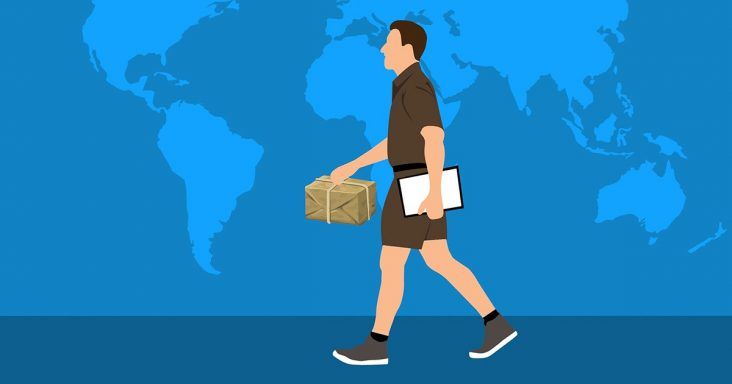Final mile deliveries rise amid e-commerce growth; peak season demand to exceed capacity
by August 18, 2021 1:21 pm 1,006 views

E-commerce growth has contributed to increased demand for final mile shipping, especially since the start of the COVID-19 pandemic. The demand is expected to remain strong through the holiday shipping season, or peak season.
Globally, final mile shipping is expected to become a $55.2 billion industry by 2025, up from $30.2 billion, according to a recent report by Roadie. During the 2021 holiday shipping season, delivery demand is expected to exceed capacity by 5 million pieces per day, said UPS CEO Carol Tomé.
In a recent Reuters webinar on final mile delivery, Trung Nguyen, senior vice president of operations for Shipt, said customers want products faster, and everything is being delivered, from cupcakes to prescription drugs. With demand in place, Nguyen said volume is the biggest challenge.
Chris Lentjes, vice president of product management, delivery and returns for Pitney Bowes, said demand is rising as people move from urban areas and into suburban or rural areas.
“Consumer preference drives delivery options,” he said. “It’s not slowing down. The COVID impact may have put a few things on hold from an investment point of view and delivery innovation, but the pedal to the metal is coming again. It’s really pushing forward and quickly.”

Nguyen said consolidation of time and delivery is important for rural area shipping. Jason JonMichael, assistant director of transportation for the city of Austin, explained the importance of collaboration between cities and rural areas to solve issues related to rural shipping and city traffic volumes.
Rural areas are good for testing prototypes, said Hebert, citing Amazon testing its delivery drones in such an area. But Hebert said adopting autonomous shipping requires a significant investment in time and money. According to the Roadie report, autonomous vehicles could cut last-mile delivery costs in urban areas by as much as 40%.
Along with Amazon, companies such as UPS, Google and Dominos, are experimenting with drones for final mile deliveries. A popular model uses a carrier van on the highway as a hub for a fleet of drones that fly out of the van to deliver small packages to nearby homes, according to Roadie. Meanwhile, FedEx and Bosch have tested sidewalk delivery robots. The Roadie report noted that retailers are investing in crowdsourced delivery to meet existing shipping demand without investing in new hardware systems.
With regard to driver retention, Lentjes said that technology could be used to reduce driver frustration and ease driving by optimizing routes. JonMichael said driver jobs are changing, but he doesn’t expect them to go away. Regarding autonomous delivery, he foresees opportunities for drivers to train robots as they know the culture and travel patterns. Hebert pointed to boosting driver pay and improving the ease for drivers to find packages in delivery vehicles.
Tulsa-based driver recruiting firm Tenstreet tracks driver retention rates for new drivers, and its third-quarter report shows turnover has risen since the second quarter. The numbers have become more volatile recently, likely as a result of the changing impact of the pandemic on carriers and the uncertainty of it. But retention rates for recently hired drivers are starting to become more stable.
